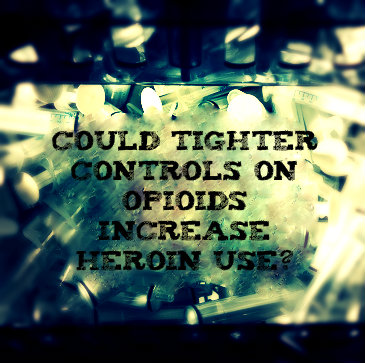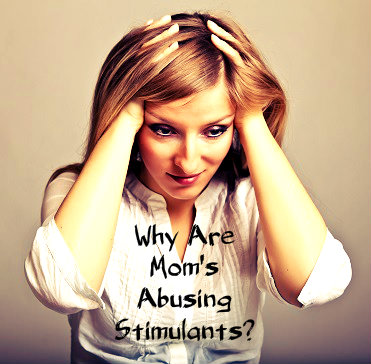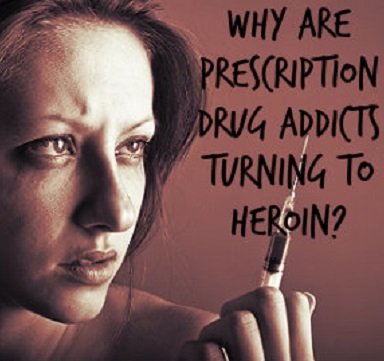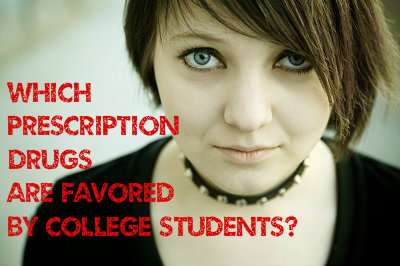20 Feb 2014
How Depression Increases Risks For Drug Overdose
A drug overdose occurs when an individual takes enough of a substance to overload the body’s organ systems and create a sharp drop in the ability to sustain life. Some people die from the impact of an overdose, while others manage to survive with or without medical assistance. In a study review published in January 2014 in the journal Drug and Alcohol Dependence, a team of Italian and British researchers sought to determine how the presence of major depression or some other depressive disorder affects the likelihood that a drug user will experience a non-fatal overdose.
 ER Treatment For Overdosing On Painkillers
ER Treatment For Overdosing On Painkillers
The federal Centers for Disease Control and Prevention (CDC) track drug overdose rates across the U.S. According to the CDC’s latest available statistics (from 2011), roughly 2.5 million Americans require emergency room treatment for an overdose each year. More than half of all cases (about 1.4 million) occur in people using a medication rather than an illegal substance. Medications specifically highlighted for their presence in overdose cases include opioid narcotic painkillers and sedative-hypnotics called benzodiazepines.
Some people unintentionally overdose on drugs or medications while involved in prescribed or recreational use. However, others overdose intentionally while attempting to commit suicide. More than half of all people successfully or unsuccessfully treated for an overdose are men or boys. Slightly more than four out of every five overdose cases occur in adults over the age of 20.
Types Of Depressive Disorders
In addition to major depression, the depressive disorder category of mental health ailments (which comes from terms established by the American Psychiatric Association) includes conditions called persistent depressive disorder, premenstrual dysphoric disorder and disruptive mood dysregulation disorder. The category also includes substance/medication-induced depressive disorder, a term specifically used to identify depression cases triggered by short- or long-term drug, alcohol or medication intake.
All depressive illnesses include episodes of “down” moods that substantially damage the ability to achieve a sense of well-being or function normally from day to day. The intensity and duration of these episodes vary according to both the effects of each specific illness and the way in which that illness manifests in the individual. People affected by another group of conditions, called bipolar disorders, also experience periods of a prominently “down” mood. One bipolar disorder in particular, called bipolar I disorder, produces periods of depression equally as severe as those found in people diagnosed with major depression.
Depression’s Impact On Non-Fatal Overdoses
In the study review published in Drug and Alcohol Dependence, researchers from five British and Italian institutions used a comprehensive analysis of previous research efforts to examine how the presence of a depressive disorder affects an individual’s non-fatal overdose risks. This analysis, based on seven studies, included essentially all commonly available information published on a related topic in the U.S. or Europe through September 2012. All told, the studies under consideration included 12,019 people living in the U.S., Australia, Sweden, Canada and Norway.
The researchers used two measurements to assess the impact of depression. First, they compared the overall rate of non-fatal drug overdose among depressed people to the rate of non-fatal overdose among people not affected by depression. They also calculated the odds that any given depressed drug user will overdose non-fatally and compared those odds to the chances that any given non-depressed drug user will overdose non-fatally.
The researchers found that depressed individuals overdose non-fatally 7 percent more often than non-depressed individuals. While this difference may seem small, it is actually highly significant in statistical terms. The researchers also found that, when compared to a non-depressed drug-using person, the odds that any given depressed drug-using person will experience a non-fatal overdose are 1.45 to 1.
Potential Factors Why Depression Leads To Higher Risks For Non-Fatal Drug Overdoses
The authors of the study review published in Drug and Alcohol Dependence don’t know for sure why depressed people have higher risks for a non-fatal drug overdose; potential factors may include higher drug dosages in depressed people and higher chances for multidrug use (a known contributor to overdose) in depressed people. They also note that no one can assume that the same situation holds true for fatal drug overdoses until someone comprehensively explores that issue. Still, they believe their findings clearly show that the connection between depressive illnesses and non-fatal drug overdoses is real. They also believe that the same connection probably exists between depressive illnesses and fatal drug overdoses.
Read More About New Research For Depression Treatment For Left Handers
Buprenorphine is an opioid narcotic medication used to ease a reliance on stronger narcotics during recovery from active drug addiction. For specific reasons, doctors often combine the use of this medication with a secondary medication called naloxone. In a study published in November 2013 in the journal Addictive Behaviors, researchers from the State University of New York, Buffalo explored the reasons some people successfully complete buprenorphine/ naloxone treatment for opioid addiction, while others do not.
Dependence Risks Of Using Opioids
All opioid substances produce two primary effects when introduced into the human body: a highly pleasurable (euphoric) mental state and a significant reduction in the ability to feel pain. Doctors rely on the pain-relieving effects of prescription opioids to relieve serious forms of pain, but must constantly monitor the possibility for the onset of opioid dependence and the subsequent development of an opioid addiction. Since illegal or illicitly used opioids produce the same basic effects as suitably prescribed opioids, intake of these substances also comes with serious dependence and addiction risks.
How Buprenorphine Is Used For Addiction
 Buprenorphine is a significantly less powerful drug than the popular legal and illegal opioids of abuse. When an opioid addict switches over to buprenorphine use, he or she commonly experiences a reduction in euphoric and painkilling sensations, and also gradually reduces his or her level of physical dependence on narcotics in general. Doctors take advantage of these qualities by prescribing the medication during opioid addiction treatment. Instead of facing intense, potentially overwhelming symptoms of opioid withdrawal during the early stages of the treatment process, patients who switch over to buprenorphine typically avoid withdrawal and set themselves up for an increased likelihood of long-term addiction recovery.
Buprenorphine is a significantly less powerful drug than the popular legal and illegal opioids of abuse. When an opioid addict switches over to buprenorphine use, he or she commonly experiences a reduction in euphoric and painkilling sensations, and also gradually reduces his or her level of physical dependence on narcotics in general. Doctors take advantage of these qualities by prescribing the medication during opioid addiction treatment. Instead of facing intense, potentially overwhelming symptoms of opioid withdrawal during the early stages of the treatment process, patients who switch over to buprenorphine typically avoid withdrawal and set themselves up for an increased likelihood of long-term addiction recovery.
In the U.S., the manufacture and distribution of buprenorphine (and all other legal and illegal opioids) are regulated under a federal law called the Controlled Substances Act. This law specifically stipulates that doctors who give their patients buprenorphine during opioid addiction recovery must also either provide access to some sort of therapeutic counseling or direct their patients to other counseling resources. The counseling options most commonly offered to individuals receiving buprenorphine are a reward/punishment approach called contingency management (CM) and a gradual behavior modification therapy called cognitive behavioral therapy (CBT). However, in reality, not all buprenorphine recipients end up participating in a counseling program, even when they have access to such a program.
How Naloxone Is Utilized With Buprenorphine
Naloxone is not an opioid drug. In fact, it was originally developed as an anti-opioid medication, and has the ability to rapidly halt the effects of opioid intoxication inside the body. Doctors use the combination of buprenorphine and naloxone to reduce the chances that a person going through opioid addiction treatment will abuse buprenorphine instead of using that medication as directed. When the two medications are dissolved together under the tongue, enough buprenorphine reaches the bloodstream to help relieve opioid withdrawal; at the same time, the presence of naloxone limits buprenorphine’s impact and reduces its usefulness as a target of drug abuse. A prescription medication called Suboxone contains the proper proportions of buprenorphine and naloxone to achieve the desired treatment objectives.
Buprenorphine/Naloxone Opioid Addiction Treatment
In the study published in Addictive Behaviors, the SUNY Buffalo researchers used an examination of 356 opioid-addicted adults to explore the factors that contribute to the successful completion of addiction programs centered on the combined use of buprenorphine and naloxone. All of these adults were enrolled in a six-month treatment course that provided access to counseling resources. 127 of the participants successfully completed the course, while the remaining 229 participants did not.
After assessing the impact of a range of potential factors, the researchers concluded that the individuals who successfully completed a naloxone and buprenorphine opioid addiction treatment differed from those who did not complete treatment in two key ways. First, they took advantage of the counseling resources made available to them and established good records of counseling attendance. Interestingly enough, they also had histories of previous, significant physical injuries.
The authors of the study published in Addictive Behaviors don’t know for sure why prior experience of a physical injury increases the chances that an individual will complete buprenorphine/naloxone-based opioid addiction treatment. However, they do have a potential explanation. Previously injured people may have a history of exposure to chronic pain; in turn, use of buprenorphine during addiction treatment may help relieve that pain in addition to decreasing a reliance on the addictive effects of stronger opioids. It is the combination of withdrawal avoidance and ongoing pain reduction that may account for the link between prior injury and successful buprenorphine/naloxone treatment outcomes.
Read More About Opioid Related Disorders And Break Free From Addiction!
Prescription painkiller abuse has grown large enough to gain the attention of pharmaceutical companies, doctors, addiction experts, and even the federal government. There are things which can be done to try and halt the abuse of prescription medications. However, those in the know say that when access to opioids is shut down, we can expect substance abusers to move on to heroin.
Made from a synthetic form of opium, opioids are heavy-duty pain relievers like Oxycodone (Percocet), Hydrocodone (Vicodin), OxyContin (a longer-lasting form of Oxycodone) and codeine. Hydrocodone and Oxycodone are usually mixed with aspirin or acetaminophen to produce longer-lasting pain relief.
 Opioids – Number One Prescribed Medication – Problem In The U.S.
Opioids – Number One Prescribed Medication – Problem In The U.S.
Opioids are the number one prescribed medication in the nation and are responsible for the vast majority of drug-related injuries and fatal overdoses, partly because people view them as safer than street drugs. Their wide availability means more drugs are in the hands of abusers.
Most opioid addicts started with a doctor’s prescription for a legitimate need. People who take more pills for a longer period than was prescribed can easily become addicted. Young people who use them recreationally can also quickly form a habit.
Thomas McClellan, the former Deputy Director for the White House Office of National Drug Control Policy, says if we can address these three issues the problem could be controlled:
3 Opioid Issues
- Over-Prescribing – Doctors want to control pain because it promotes healing and fosters a strong doctor-patient bond. Banning opioids outright will not work, but perhaps changing the standards of care which guide prescribing could.
- Insufficient Monitoring – Efforts are underway in most states to establish state-level monitoring programs. Under these programs every doctor who prescribes, patient who picks up and pharmacy that fills a controlled drug prescription will go on record. This should help reduce over-prescribing by doctors and keep patients from going from doctor to doctor in search of prescriptions.
- Patient Misuse – The Federal Drug Administration would like to see Hydrocodone reclassified to Schedule II so that it would have more oversight and be less accessible to patients. Under Schedule II constraints such as limiting automatic refills could help to reign in misuse.
How Tightly Controlling Opioids Could Increase Heroin Use
Would these measures stop painkiller abuse? Perhaps. But even if we succeed, experts predict that drug use will simply shift to another opiate: heroin.
Opioids are synthetic opiates (forms of opium) while heroin is a non-synthetic form. In other words, the drugs are somewhat related and produce similar results. Heroin costs about one half as much as synthetic opioids. So if opioids become more expensive and harder to get, experts predict that users will just switch to heroin.
Communities need to be ready for the shift that will most likely happen as a result of opioid crackdowns. The next question will be how to handle the heroin crisis.
If you or a love one needs help finding a drug rehab facility contact an Elements Recovery Advisor now! 855-763-6488
“Mother’s little helper” has been around for decades. In 1966, The Rolling Stones released a hit song about the abuse of drugs, like Valium, by mothers looking to take the edge off a busy day. Now, some moms are using different substances to get through the day: prescription stimulants. Although they can provide a boost of much-desired energy, many women develop a drug addiction to these commonly prescribed “legitimate” medications.
 Prescription stimulants are normally used to treat a range of medical conditions, including attention-deficit hyperactivity disorder (ADHD), narcolepsy, and depression. Common stimulant medications include Dexedrine (dextroamphetamine), Adderall (amphetamine and dextroamphetamine), Ritalin (methylphenidate), and Concerta (methylphenidate).
Prescription stimulants are normally used to treat a range of medical conditions, including attention-deficit hyperactivity disorder (ADHD), narcolepsy, and depression. Common stimulant medications include Dexedrine (dextroamphetamine), Adderall (amphetamine and dextroamphetamine), Ritalin (methylphenidate), and Concerta (methylphenidate).
Legitimate Stimulant Use
Chemically, these drugs are similar to natural neurotransmitters within the brain, including norepinephrine and dopamine. When taken to treat a genuine medical condition, a physician will prescribe the medication at a low level and gradually increase it until the drug produces the desired effects. In addition, the stimulant typically comes in a capsule or tablet form that allows for the slow release of the medication into the body. This slow, steady rise in dopamine mimics the body’s natural production. When used as directed by a physician, ADHD medications and other prescription stimulants are not addictive and produce no high.
Stimulant Abuse And Emergency Room Visits
The effect is different when stimulants are abused, however. Instead of capsules or tablets generating a slow, steady rise of dopamine over time, the pills are crushed before being snorted or they are dissolved in water and then injected. This causes a dopamine rise so rapid that it disrupts the brain and produces feelings of euphoria.
Evidence suggests that drug addiction to stimulants is on the rise. For example, emergency room visits involving stimulant abuse skyrocketed between 2005 and 2010. Visits more than tripled for people over age 26 [1].
Why Mom’s Are Abusing Stimulants
The demands placed on mothers in this culture can feel overwhelming. From single moms to homeschooling moms to moms who work outside the home, many feel the pressure of being the master multitasker. Some mothers turn to stimulants in the belief they will help them focus better on their responsibilities or help them make it through a hectic day. It’s important to note that while these prescriptions can increase concentration in those with a medical need for them, there is no clinical evidence that abusing these drugs sharpens focus.
Women also frequently use stimulants to lose weight. For example, Adderall can speed up metabolism and lower appetite, resulting in weight loss. However, it’s not a healthy or permanent weight loss solution. When a woman stops taking the drug, she typically gains the weight back – and sometimes even more.
Dangers Of Stimulant Abuse
Abusing any drug can have a serious impact on a mother’s emotional and physical well-being; however, stimulant abuse is particularly dangerous. When abused, these medications can trigger irregular heartbeat, heart failure, seizures, and dangerously high body temperatures. As mentioned earlier, stimulants also cause decreased appetite, which, in serious cases, can cause malnutrition. In addition, women addicted to high doses often experience episodes of paranoia or hostility. Instead of helping a mother meet the demands of a busy lifestyle, stimulants make it harder to handle normal responsibilities, including caring for children.
There is also added danger in the method some addicts use to get high. When the drug is dissolved in water, some insoluble fillers in the pill may not break down completely. While these solid pieces are small enough to be injected, they are also large enough to block small blood vessels, creating the risk for serious health complications.
Stimulants are also dangerous because they don’t mix well with other substances. The ER study mentioned above showed that 63% of visits involving stimulants included the use of alcohol, painkillers, sleep aids, or anti-anxiety medications [1]. The use of other drugs adds an additional layer of risk to stimulant drug addiction.
Stimulant Drug Addiction Treatment
If you’re addicted to or abusing stimulant prescription drugs, you need drug rehab treatment. Addicts experience psychological withdrawal from chronic stimulant abuse, so the first step will likely be a medically-monitored detox to wean your body from the drugs.
After detoxification, therapy begins. There are several therapies used to treat this addiction, and your rehab team will recommend one or more based on your situation. Cognitive-behavioral therapy (CBT) is often used to examine the negative thoughts, beliefs, behaviors, and emotions that contribute to addiction. Once you better understand how those contribute to your drug addiction, you’ll learn how to positively change those thinking patterns in order to cope in a healthier way. Although considered a short-term type of therapy, CBT involves a gradual process that takes time and effort in order to be effective.
Contingency management is another treatment that may be used for abuse of Adderall and other prescription stimulants. Sometimes called voucher-based reinforcement (VBR), the program provides tangible rewards for positive behaviors and staying drug free. For example, an addict who stays clean for a specified period of time, as verified through urine samples, may earn a voucher for food, movie tickets, or other goods and services that promote drug-free behavior. The value of the voucher starts low and increases the longer the addict stays clean.
Studies of contingency management show that it can reduce stimulant abuse when used as part of a comprehensive treatment strategy [2]. Additionally, one study suggests that, on its own, contingency management may be more effective at treating stimulant use than CBT alone [3].
Treatment for stimulant drug addiction will also likely include support groups. Often based on the 12-step program first developed by Alcoholics Anonymous (AA), self-help groups provide guidance and assistance to recovering addicts. You’ll be able to connect with others going through the same struggles, which may help reduce feelings of hopelessness or isolation. Meetings are free, and you can attend them for as long as needed to help you stay abstinent.
Drug addiction in mothers can lead to serious consequences for herself and her children. Contact a drug rehab treatment facility about getting help for stimulant abuse or addiction. With treatment, it’s possible to stop abusing drugs and start learning healthier ways to live life, no matter how hectic your life may be.
References:
[1] http://www.samhsa.gov/newsroom/advisories/1301241230.aspx
[2] http://www.ncbi.nlm.nih.gov/pubmed/23138961
[3] http://www.ncbi.nlm.nih.gov/pubmed/16445555
A recent report from Olympia, WA, calls for a citywide conversation regarding the growing problem of heroin abuse plaguing the area—particularly drawing attention to the widespread issue of dirty needles. Heroin abuse is damaging in a host of more obvious ways—addiction, destroyed relationships, torched careers and the direct physical consequences—but one of the biggest issues comes from the use of unclean needles. This conversation isn’t a comfortable one for many citizens, but it’s a problem that will not go away, particularly with the epidemic-level prescription drug abuse gripping the nation.
Prescription Drugs: A Gateway To Heroin?
 The prescription drug addiction crisis that America is facing has already been shown to have led users into heroin abuse. Understanding why requires some basic knowledge of the chemical similarity between the substances. The most effective painkillers are opioid drugs like oxycodone and hydrocodone (the active ingredients in OxyContin and Vicodin, respectively), substances derived from the opium poppy. This plant is the ultimate source of heroin, and the drugs are therefore effectively the same. Exceeding your doctor’s prescribed dosage heightens the narcotic effect of the substance, making it roughly comparable to taking a dose of heroin. This is why 12 million Americans used prescription painkillers non-medically in 2010 and why so many people become addicted and many of them overdose—but the supply isn’t always easy to come by.
The prescription drug addiction crisis that America is facing has already been shown to have led users into heroin abuse. Understanding why requires some basic knowledge of the chemical similarity between the substances. The most effective painkillers are opioid drugs like oxycodone and hydrocodone (the active ingredients in OxyContin and Vicodin, respectively), substances derived from the opium poppy. This plant is the ultimate source of heroin, and the drugs are therefore effectively the same. Exceeding your doctor’s prescribed dosage heightens the narcotic effect of the substance, making it roughly comparable to taking a dose of heroin. This is why 12 million Americans used prescription painkillers non-medically in 2010 and why so many people become addicted and many of them overdose—but the supply isn’t always easy to come by.
One of the unexpected downsides of cracking down on prescription drug abuse is that many people are left addicted to opiates but without the pills to satisfy their cravings. This problem is “solved” by many of the users by buying heroin — it’s easier to get and is cheaper than the medically legal versions prescribed by doctors.
Hidden Drug Problem
Olympia, WA, is experiencing an increase in heroin use. Previously, the heroin problem was primarily confined to grim alleyways in the inner city, but now—thanks in part to narcotic prescription medicines—it’s expanded into the suburbs, spreading across the city like a disease. While the obvious issues are the crimes associated with heroin abuse and the physical harm to the user, another immediate problem tied to increased heroin use is that of dirty needles littering the streets. The local paper, the “Olympian,” is calling for an open and frank discussion on the problem within the community.
Dirty Needles And Blood-Borne Viruses
Research from 2004 shows that one-fifth of HIV infections and the majority of hepatitis C infections were related to intravenous drug use, and one-quarter of America’s injecting drug users have HIV or AIDS. The reason is simple: with intravenous drug use, any case where two users share a needle represents a potential infection; the blood invariably remaining on the needle being plunged directly into the vein of the next user. In short, all needle-sharing is equivalent to unprotected sex. This is why needle-sharing is particularly ill-advised, but thinking realistically (particularly when accounting for the priorities of someone dependent on opiates) it’s clear that many users will take the risk to get their fix.
Needle Exchange Programs: Encouraging Addiction Or A Vital Service?
The problem with needle sharing is why needle exchange programs were created. The premise is simple: offer intravenous drug users a safe place to dispose of their used needles and offer them clean injecting equipment to reduce the risk of infections in the future. Olympia provides such a service and has for nearly 20 years. In 2012, about 950,000 dirty needles were collected and marginally fewer clean ones were distributed. The fact that the number of collections exceeds the number of distributions is a source of concern (the widespread discarded needles in locations like parks risk infecting children or non-using adults), but overall, the program undoubtedly reduces the numbers of blood-borne viruses.
However, critics argue that it isn’t right to distribute equipment to drug users who clearly have a problem, and that the programs merely allow them to continue on in addiction. This is an understandable criticism, but public health officials and those who operate the programs counter that the benefits of the programs outweigh the potential moral issues. Reducing the spread of HIV and hepatitis is a huge benefit, and it’s clear that the users aren’t only continuing to take heroin because they’ve been given free clean equipment; they are struggling with addiction and would continue using either way.
Harm Reduction As A Last Resort
It’s unreasonable to assume that every heroin user—or indeed every prescription drug user—will be able to quit effectively. Human history has repeatedly shown that not to be the case. This is why, in the most extreme cases, it’s better to focus on reducing harm as much as possible. The individual might be struggling to battle his demons and get clean, but does that mean we should stand by and do nothing while he risks HIV infection? It might make us feel like we live in a more harmonious world to pretend that these problems don’t exist, but it doesn’t improve the situation. If you turn a blind eye to the unnecessary suffering, you’d be fooling yourself to think it stopped happening.
See How Prescription Drug Abuse Is A Growing Problem On College Campuses – Click Here
Already this fall one college campus has been rocked by prescription drug abuse. A cheerleader from the University of Minnesota was arrested in September when she was found in possession of drugs without a prescription. This is but a microcosm of a serious national problem. Young people all across America are buying and sharing powerful prescription medications.
 The 18-year-old at the University of Minnesota was seen wandering up and down the halls of her dormitory, seemingly in a drunken state. When officials entered her dorm room they found prescription painkillers but no prescription. They also found an electronic scale and an undisclosed amount of marijuana. She is facing three separate felony charges and potentially five years in prison.
The 18-year-old at the University of Minnesota was seen wandering up and down the halls of her dormitory, seemingly in a drunken state. When officials entered her dorm room they found prescription painkillers but no prescription. They also found an electronic scale and an undisclosed amount of marijuana. She is facing three separate felony charges and potentially five years in prison.
Majority Of College Students Sharing Prescriptions?
But her story is far from unique. One survey reported that 70 percent of college co-eds said they shared prescription medications with one another. A health official told a local news station that that for every one student with a legitimate prescription another five students possess stimulants with no prescription. And the problem is not restricted to college campuses. Another study found that 20 percent of graduating high school students say they have used prescription drugs for non-medical purposes.
One reason prescription drug abuse has escalated has to do with the enormous supply of pills that are floating around where young people can get them. An astounding 210 million prescriptions were written by doctors for painkillers in 2010, and that number has only gotten larger. With that many pills sitting on shelves in homes it’s hard to choke off the supply.
Opiates And Stimulants – Drugs Favored By College Students
The most popularly abused prescription drugs are opiate painkillers derived from the same opium poppy as heroin. When meds become harder to get or start costing too much, kids move on to heroin as it produces similar effects at a fraction of the cost.
Stimulants like Adderall and Ritalin are also popular among young people. These drugs are most often used to treat the symptoms of attention deficit hyperactivity disorder, but healthy kids take them to increase study skills, stay awake for parties and lose weight.
Dangers Of Prescription Drug Abuse
According to the Centers for Disease Control, at least 100 people die each day as a result of prescription drug overdose. The danger is real, though young people seem oblivious. The arrest of a pretty young college cheerleader is just the tip of the iceberg.
Each year the Substance Abuse and Mental Health Services Administration (SAMHSA) conducts a National Survey on Drug Use and Health. The results of the 2012 survey have been published and coincide with the September observance of National Recovery Month.
For the most part, the report held good news showing how some worrying trends have begun to reverse. According to the 2012 study, abuse of alcohol, tobacco and even prescription drugs is on the decline.
It is helpful to compare SAMHSA studies over the past decade to get a picture of how substance use is trending among America’s youth. There was good news in terms of certain substances and no progress in either direction in terms of other substances. Here is some of what the 2012 SAMHSA report had to say:

SAMHSA Report On Prescription Drug Abuse
The news on prescription drug abuse was encouraging and showed just how effective increased awareness and minor behavioral changes can be. Just four years ago 6.4 percent of 18 to 25 year olds were abusing prescription medications each month. In 2012 that number had dropped to just 5.3 percent and figures were very similar in 2010 and 2011. Public awareness, tighter controls on medications and targeted treatments all contributed to the improved statistics in this area
Alcohol Use Trend From SAMHSA Report
The SAMHSA report also showed that rates of drinking, even heavy drinking and binge drinking, by 12 to 17 year olds were lower compared to the numbers of teens drinking in 2002 and 2009. In 2002 around 14.2 percent of teens drove while under the influence of alcohol but that figure dropped to 11.1 percent in 2011 and inched up only slightly to 11.2 percent in 2012.
SAMHSA On Tobacco Use
Tobacco use was another bright spot in the report. Just over 15 percent of teens less than 18 years old reported smoking tobacco in 2002 but that dropped precipitously to 8.6 percent in 2012.
Illegal Drug Use From SAMHSA Report
Use of illegal drugs has held pretty much steady in recent years, right at 9 percent. Marijuana has grown in popularity for nearly a decade. In 2007, 5.8 percent of teens reported using marijuana, but in 2012 that number rose to 7.3. There was a slight decline in the number of those reporting marijuana use between 2011 (7.9 percent) and 2012 (7.2 percent) but it remains the most widely used illicit drug among teens.
Rates of drug abuse and drug addiction fell from nine percent in 2002 to six percent in 2012 but there is still so much progress needing to be made. According to SAMHSA estimates, 23 million Americans needed substance abuse treatment in 2012, but only 2.5 million received specialized care. It is important to be energized by the recent successes and redouble efforts to see prevention and intervention programs become the norm.
To See More About Trends In Teen Substance Abuse – Click Here
For nearly a quarter century now the state of Indiana has been conducting a youth substance use survey. The data is used to direct prevention and intervention strategies and to gauge how well those efforts are working. The most recent annual survey of alcohol, tobacco and other drug use, the Indiana Youth Survey 2013, reflects current trends in teen behaviors and attitudes and shows that some interventions are proving successful.
 The survey questioned 117,554 teens from private and public schools attending grades six through senior in high school. The survey is conducted in conjunction with the Indiana Prevention Resource Center who makes resources available to schools and communities aimed at curbing teen substance abuse.
The survey questioned 117,554 teens from private and public schools attending grades six through senior in high school. The survey is conducted in conjunction with the Indiana Prevention Resource Center who makes resources available to schools and communities aimed at curbing teen substance abuse.
Use of marijuana by teens (12 to 17 years) hit an all-time high in the state between 2008 and 2011. The good news is that the most recent survey shows that marijuana use is now falling among teens there. However, while marijuana use is dropping, its use is still seen as too high, and synthetic marijuana use is an increasing concern.
Synthetic Marijuana Use Dangerously Increasing
Synthetic marijuana is just what it sounds like — a man-made substance that mimics marijuana. It is made by drying plant material and then spraying it with chemicals which mirror the effects of marijuana and THC. The plant material is then chopped and marketed in stores as incense, but kids roll it and smoke it just like natural marijuana. In fact, the survey shows that teens are not substituting fake marijuana for real marijuana but are using the two drugs simultaneously.
This year’s survey included new questions related to risk factors and protective factors that influence teen drug use. Questions pertaining to the health of relationships and attitudes reveal the degree of risk or protection teens are experiencing. The attitudes of parents and friends about drug use influences teens greatly, as do how well relationships at home, school and among peers are faring.
Prescription Drug Abuse
The survey found that prescription drug abuse increases with age. Less than two percent of sixth graders reported abusing prescription drugs, but more than 14 percent of seniors admitted using. The survey was specific in asking teens if they bought prescription drugs from friends or obtained them from family members. Since a major protective factor against prescription drug abuse is a teen’s perception of danger, the survey highlights the need for more information and better education strategies letting kids know just how dangerous misuse of prescription drugs can be.
Other news found in this year’s survey included success in lowering the numbers of teens who engage in gambling (online, lottery, slot machines etc.). Teen gambling rates have dropped in Indiana and the survey revealed that teen regret/remorse over gambling is increasing.


